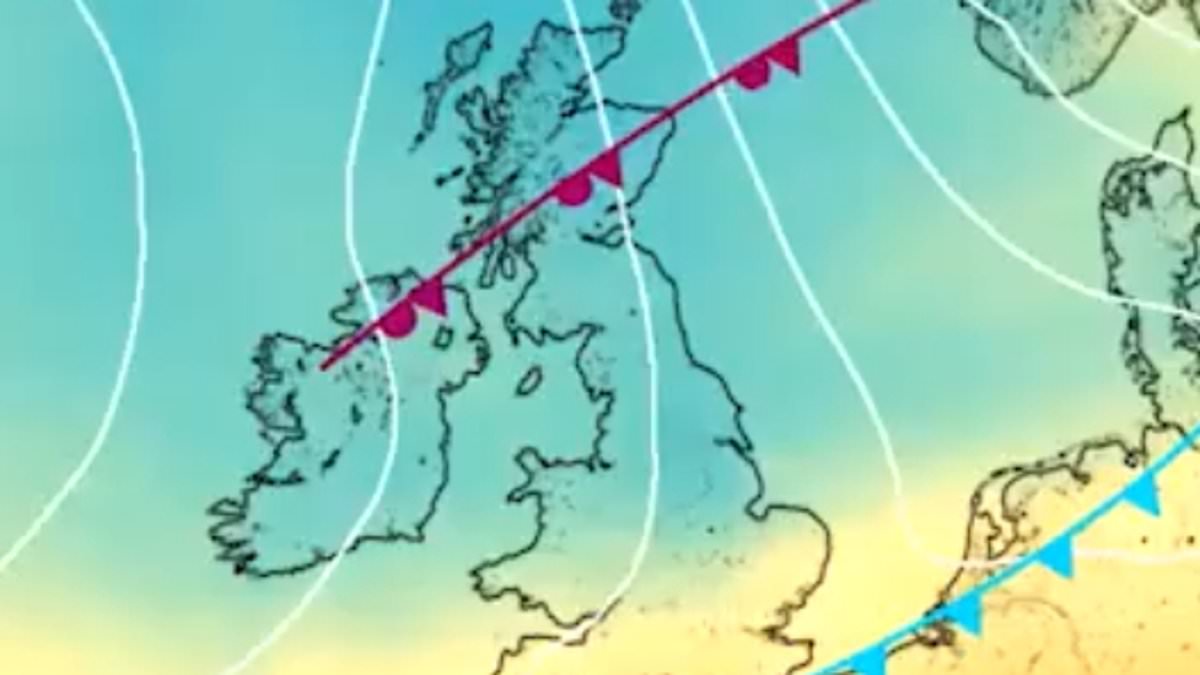There’s a chance of snow, frost and ice sweeping the UK this week after temperatures plunged to 0.3C yesterday.
It follows a brief sunny respite from an ‘anticyclonic gloom’ which deprived Brits of sun and sapped energy from solar farms.
But after a mild start to November, temperatures are ‘likely’ to drop this week to what is average for this time of year.
It will be mostly dry for many places but some rain in western Scotland is forecast.
The Met Office said it will be even colder in the north through the weekend and at the start of next week.
It said there is a ‘chance of frost and ice’ for some areas and even the possibility of some snow.
The ‘colder spell’ will be accompanied by some ‘gusty winds’, the forecaster added.
Deputy Chief Meteorologist Mark Sidaway explained: ‘While temperatures will gradually decline through this week, there’s potential for a colder period of weather to develop from the weekend.
‘At this range there’s still much detail to be worked out, but a more unsettled start to next week is likely, with a chance of frost and ice for some.
‘This drop in temperatures heightens the chance of some snow to high ground in the north of the country, though there is still a minority of scenarios which could bring some snow to lower levels at times.
‘Needless to say, we’ll be assessing the forecast for this period more in the coming days, but a colder spell of weather is likely, with some gusty winds also possible for some.’
Temperatures plunged to as low as 0.3C in Katesbridge, Co Down, on Monday and it was just above freezing in Sennybridge, Powys.
But the chances of any ‘widespread or disruptive’ snowfall are low, The Met Office clarified.
An ‘anticyclonic gloom’ which left much of the UK with hardly any sunshine for over a week finally left the capital on Monday morning.
The dull spell meant that Brits only saw three hours of sunshine in seven days up until Thursday.
On average, those living in the south of England only saw one hour of sunshine since the month started.
Met Office meteorologist Ellie Glaisyer said: ‘After a gloomy and grey start to November, there is some sunshine on the way as we see high pressure redeveloping across the UK into the new working week.’
She added: ‘It will be quite a chilly start, particularly for the northern half of the UK, under those clear skies, temperatures dropping into low single figures, perhaps even some frost in places.’
Met Office spokesman Stephen Dixon revealed earlier this week that the ‘atmospheric gloom’ is when ‘high pressure traps a layer of moisture near to the earth’s surface and that brings a prolonged period of dull and cloudy weather, but with pockets of mist and fog as well’.
He said: ‘We’ve been locked into this weather pattern for a few days now and we’ve got a bit more of it to come. However, there is a change on the way, with brighter skies early next week.’
Mr Dixon said the ‘atmospheric gloom’ is ‘unusual but not unheard of’, but has meant that the UK has so-far had only 5 per cent of the average sunshine expected for the month of November, compared with the 23 per cent expected at this stage in the month.
ITV weather presenter Becky Mantin said early November’s stagnant weather was ‘creating a staggering lack of sunshine’.
She said: ‘For some, there has been no respite at all – Odiham in Hampshire has recorded zero minutes of sunshine so far this November.
‘Wales takes the unenviable second place spot with an average of just 12 minutes! Forty eight minutes recorded in Northern Ireland and only a touch more in southern England with 54 minutes.’
The amount of wind and solar energy generated has fallen significantly over the past two weeks due to the gloomy weather.
Data from Elexon, which runs Britain’s wholesale electricity market, shows how dire renewable energy production has become.
Three weeks ago, on October 20, wind was producing 60.8 per cent of Britain’s power – 19.2 gigawatts (GW) – during the 8am to 9am rush.
That tumbled to just three per cent (1.1GW) during the same time slot on Tuesday last week.
In fact, wind generated just 2.8 per cent of Britain’s power (1GW) that day between 10am and 11am – its poorest performance of the year.
Solar power production was also down over the past week, barely managing to supply three per cent of the nation’s energy.
On average, wind has supplied nearly a third of the UK’s power over the past year, while solar produces around five per cent.
The dip comes as Sir Keir Starmer and Energy Secretary Ed Miliband are expected to pledge to cut CO2 emissions by 240m tonnes – 60 per cent of their 2022 levels – by 2035.
The government is targeting to ‘decarbonise’ the power system by 2030 by ending the use of gas-fired power stations. In September, the last remaining coal-fired power station in Britain was shut down.
